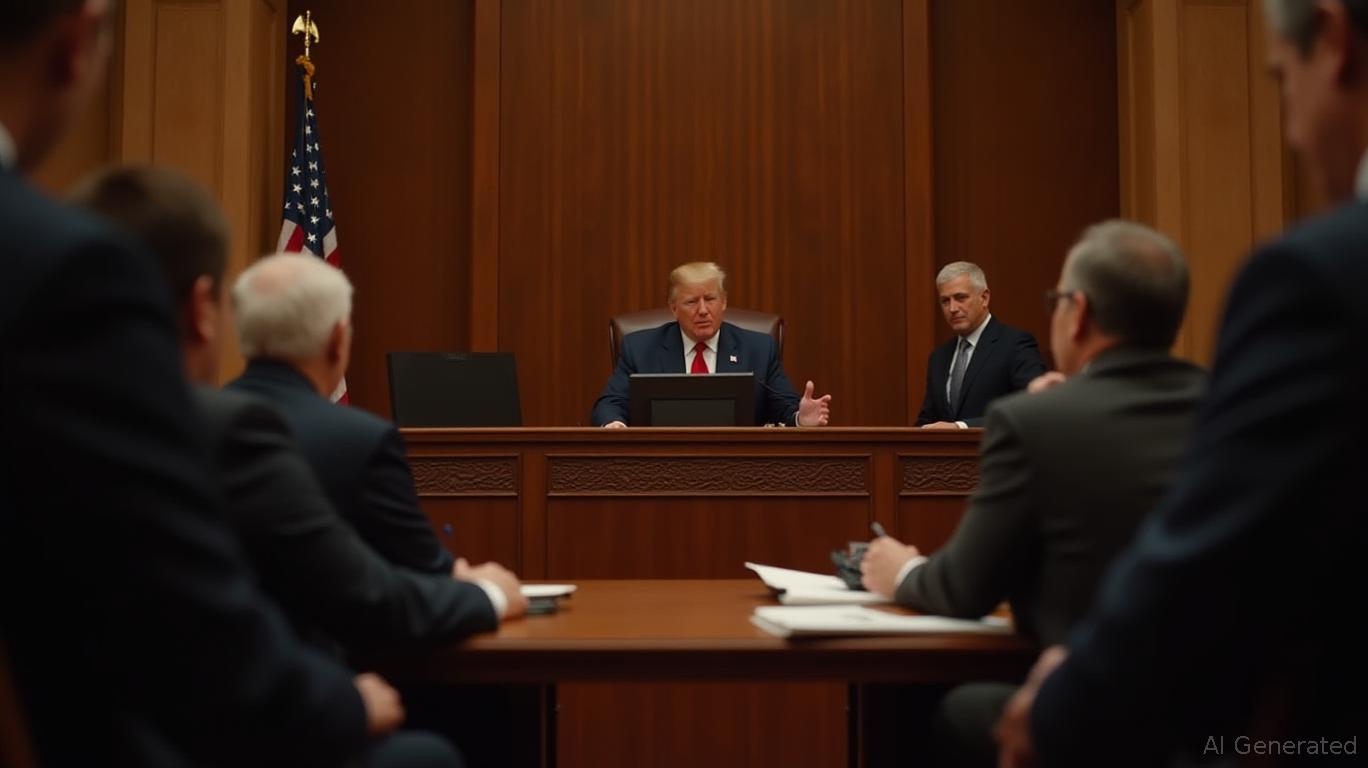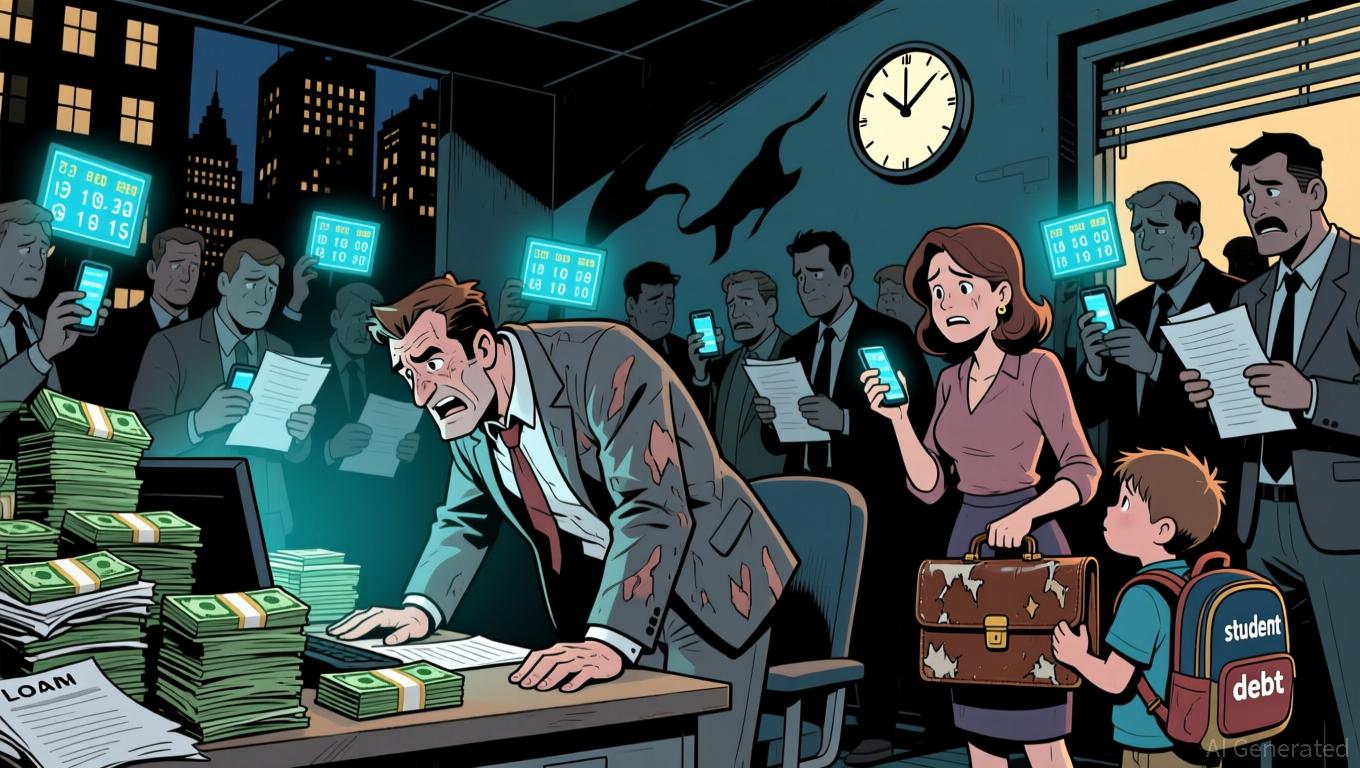Bitcoin Latest Update: TGA’s $1 Trillion Liquidity Drain Drives Bitcoin Down to Lowest Point in Six Months
- U.S. government shutdown swells Treasury General Account (TGA) to $1 trillion, draining liquidity and pushing Bitcoin down 19% from October highs. - Fed injects $30B via repo operations as banks face cash shortages, signaling active liquidity management amid structural tightening. - Analysts predict Bitcoin "final drop" correction phase, with potential rally expected post-shutdown as fiscal spending resumes and rate cuts loom. - Pessimists warn of 2018-style crisis if shutdown extends, while optimists fo
Bitcoin Confronts Liquidity Squeeze as U.S. Government Shutdown Pulls $1 Trillion from Financial System
Bitcoin has dropped 19% since its high in October, a decline worsened by the U.S. government shutdown, which has withdrawn $700 billion from markets through the Treasury General Account (TGA), according to a

Bitget observed that the TGA's rapid growth—from $800 billion to over $1 trillion since October 10—has effectively trapped liquidity within the Federal Reserve, stopping it from circulating in the broader banking sector. This has pushed banks to borrow at higher costs, with the SOFR–FDTR gap widening to +30 basis points, the largest since March 2020. In response, the Federal Reserve has provided $30 billion in liquidity via temporary repo measures, marking the first such move since the 2019 repo turmoil. Experts suggest this marks a transition from passive balance sheet reduction to more active liquidity intervention, and anticipate further support if the shutdown continues past mid-November.
According to a
Market confidence has eroded further as the shutdown approaches 36 days—the longest in U.S. history—according to
Optimists such as Raoul Pal believe the current difficulties are short-lived, as he discussed in a
As the political standoff continues, Bitcoin’s outlook remains closely tied to the TGA’s path. Renewed government spending could spark a fresh liquidity cycle, but until then, the cryptocurrency continues to face challenges from a cash-strapped system.
Disclaimer: The content of this article solely reflects the author's opinion and does not represent the platform in any capacity. This article is not intended to serve as a reference for making investment decisions.
You may also like
Supreme Court Decision on Tariffs May Require $140 Billion in Refunds and Prompt Federal Reserve to Lower Rates
- UBS warns a Supreme Court ruling against Trump's tariffs could force $140B refunds, straining U.S. fiscal resources and prompting potential Fed rate cuts. - The refunds stem from 39% Swiss tariffs deemed potentially unlawful, with fiscal impact equivalent to 7.9% of 2025's projected budget deficit. - Legal challenges highlight executive overreach risks, while reduced tariffs could boost consumer spending and ease inflation, creating room for Fed easing. - Swiss business leaders have lobbied Trump to lowe

Ethereum Updates: TRON's GreatVoyage: Strengthening USDT's $122B Network to Compete with Ethereum

Arm's Low-Power Architectures Overcome AI Energy Constraints, Fuel 34% Growth in Revenue
- Arm Holdings reported $1.14B Q3 revenue, 34% YoY growth surpassing forecasts, driven by AI/data center demand. - Royalty revenue rose 21% to $620M while licensing revenue jumped 56% to $515M, reflecting strong IP adoption. - Strategic shift to develop full-chip solutions via Compute Sub Systems aims to compete with Nvidia/Amazon in AI hardware. - Parent company SoftBank explored Arm-Marvell merger to strengthen AI infrastructure, highlighting industry consolidation trends. - 20 "buy" ratings and $155 pri

Fed Faces a Choice: Boost Growth or Curb Mounting Debt?
- U.S. household debt hit $18.59 trillion in Q3 2025, driven by rising credit card, student loan, and home equity debt with delinquency rates at multi-year highs. - The Fed initiated rate cuts amid slowing job growth but faces a dilemma: easing economic strain risks inflating a consumer debt bubble while tightening worsens defaults. - Retailers, banks, and auto lenders face fallout as discretionary spending declines and loan defaults rise, while essential goods and debt collectors see increased demand. - P
